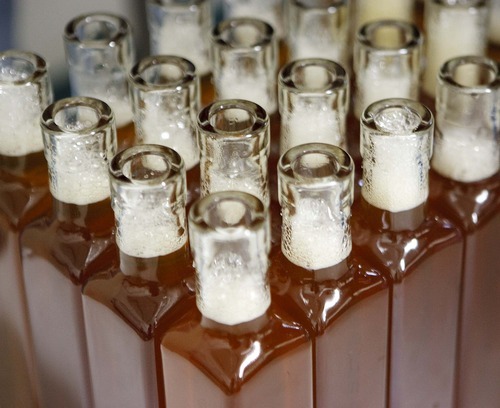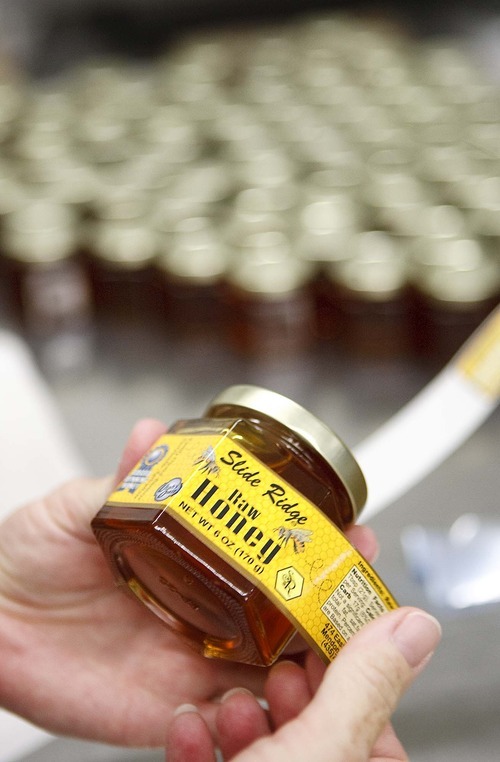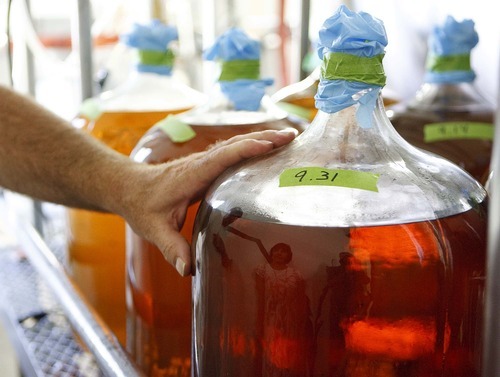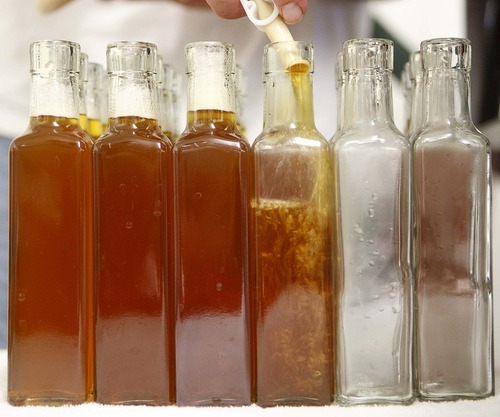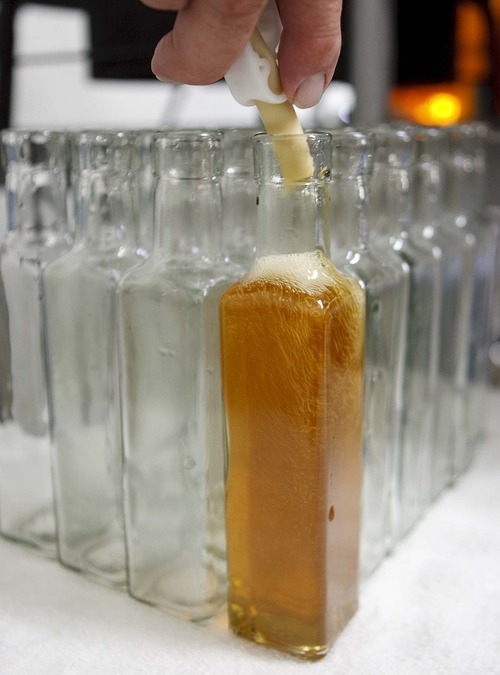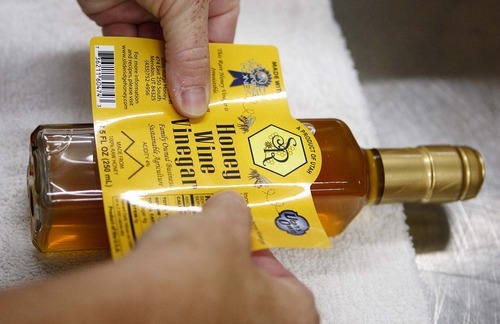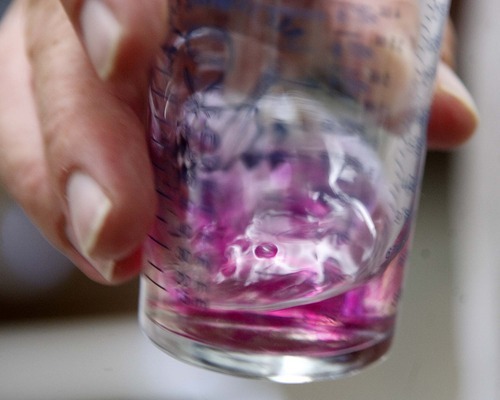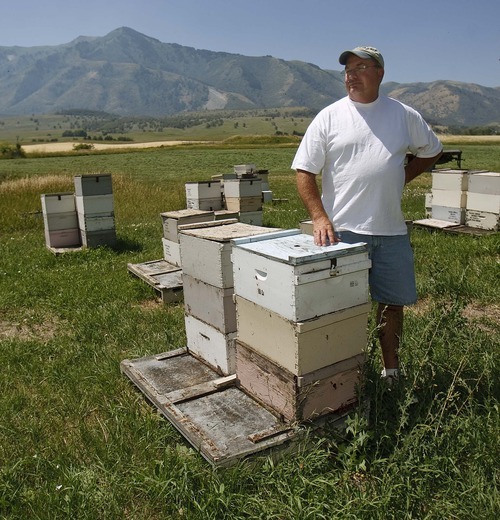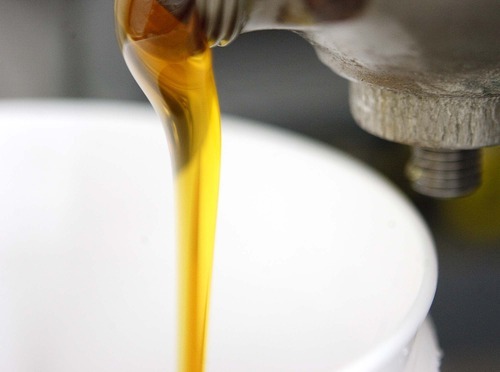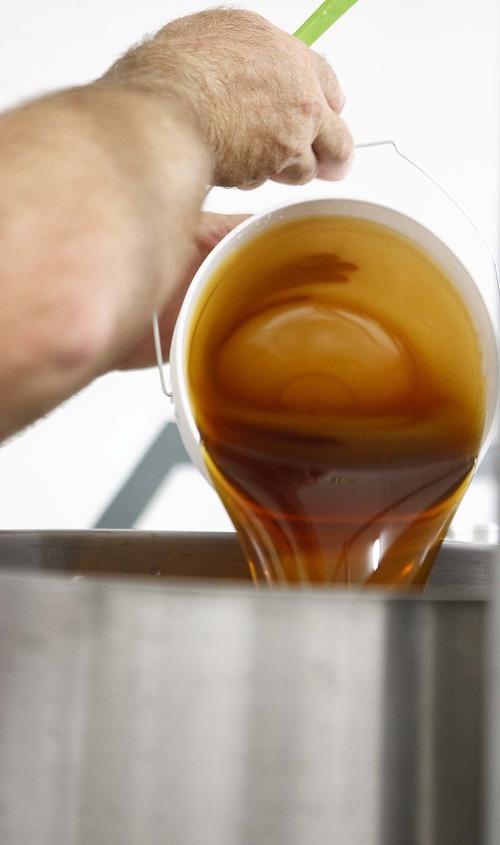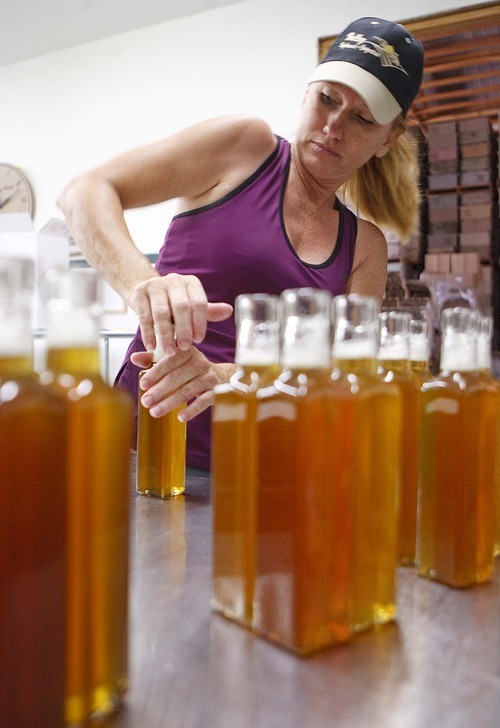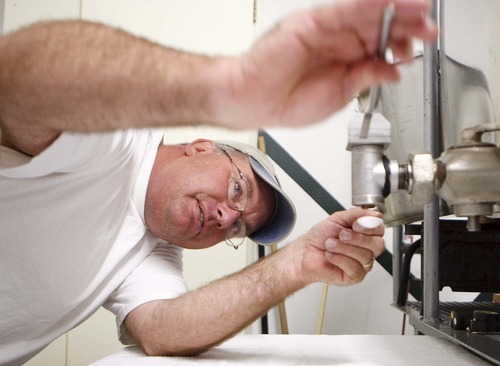This is an archived article that was published on sltrib.com in 2011, and information in the article may be outdated. It is provided only for personal research purposes and may not be reprinted.
Mendon • Honey is usually sweet — except in the hands of Martin James, a Cache Valley beekeeper who transforms the golden nectar into gourmet vinegar.
Since he introduced Slide Ridge Honey Wine Vinegar in January, the sweet-yet-sour vinegar has been surprising home cooks and top Utah chefs, who say the condiment is reminiscent of artisan European versions.
"Honey vinegar is rare," said Kaharim Becerra, the chef at Vuz restaurant and bar in Draper. "You see it in France, Italy and Spain. But it's one of the those products you don't expect to see made here."
Slide Ridge, along with a company in Washington state, are the only producers of honey vinegar in the United States. "It's amazing," Becerra said of the Utah version, which he uses at the fine-dining restaurant as a marinade for duck and a finishing drizzle for seared scallops. At home, he says it brightens fresh fruit and is an unbeatable topping for vanilla ice cream.
At Forage restaurant in Salt Lake City, chefs Viet Pham and Bowman Brown — winners of Food & Wine magazine's "Bests New Chef" award — have used it for about two months to finish sauces and pickle vegetables.
"It adds a nice sweet acidic punch to whatever we are serving," said Pham, who sent bottles of the honey vinegar to several of his "Best New Chef" classmates.
Home cooks are discovering the vinegar as well. Caputo's Market in downtown Salt Lake City sells more than 20 bottles a week of the "liquid gold," said owner Matt Caputo. An 8.5-ounce bottle costs $22.
"Even though it's expensive, we've had no problem selling it as a replacement to balsamic vinegar," he said.
—
Sweet and sour •Vinegar can be made from just about any ingredient that contains sugar. Apple cider, rice, barley (for malt vinegar) and grape juice (which makes balsamic vinegar) are the most common ingredients.
Honey was an obvious vinegar choice for James, who grew up in Mendon and started beekeeping when he was about 8 years old. At that time, James wanted to attend a community beekeeping class being offered by Utah State University Extension Services in nearby Logan. Initially, the instructor thought he was too young and refused to let him register. The next year, the persistent boy convinced his mother, Jean, to enroll, and she talked the instructor into letting her son tag along.
That winter, his father Elmer, an engineer, helped his young son build three bee boxes. The following spring, the boy ordered a package of bees from California to fill the hives.
Beekeeping remained a hobby for several years, as James grew into an adult and worked in the construction business.
Several years ago, looking for a career change, James, now 45, decided to turn his hobby into an agricultural business. With the help of his family, they increased the number of hives from 100 to more than 2,000 and the Slide Ridge Honey was born.
—
Busy bees • The company, which gets its name from the bare swath of mountain behind their home, is truly a buzzing family operation that involves three generations. Elmer James, now retired, helps build hives and fix equipment. Sister, Kelli Bess, runs the warehouse, while James' three children help with hand bottling, labeling and even selling the products at local farmers markets.
Raw honey and the vinegar make up only about 10 percent of the Slide Ridge operation. Each year in January, James and a second sister, Karla Shelton, who also is a beekeeper, transport the Slide Ridge hives to California's San Joaquin Valley where the bees pollinate almond trees.
They bring the bees home to Utah in late March, where they are placed in high-altitude yards, free from pesticides, all across northern Utah. The raw wildflower honey is then collected and sold. James — a self-described lover of chemistry as well as a savvy entrepreneur — knew that the company needed to find new uses for the honey if it wanted to be successful. "I wanted to do something that no one else was doing," he said.
So he spent seven years researching, experimenting and ultimately perfecting the vinegar-making process, following a centuries-old process. Raw honey is mixed with water and yeast, and then ferments for about eight months until it turns into a mead or low-alcohol wine. A "mother" bacterium is then added, which turns the alcohol into acetic acid or vinegar.
Unlike other vinegars that are often a muddy brown color, Slide Ridge honey wine vinegar has an inviting golden hue, which is part of its allure.
"It's the perfect color," James said. "You just know it comes from the sunshine."
facebook.com/trib.remix
sltrib.com/blogs/bitebybite —
Slide Ridge Honey Wine Vinegar
What • Cache Valley beekeeper, Martin James, along with his extended family, produce a golden-hued vinegar made from raw honey. It one of only two honey vinegars produced in the United States.
Cost • $22 for an 8.5-ounce bottle
Where to buy • Caputo's Market and Deli, Salt Lake City; Thanksgiving Point, Lehi; Two Bit Saloon and Rovli's restaurant, Ogden. Also sold at the downtown Farmer's Market at Pioneer Park, Wasatch Market at Wheeler Farm, Park City Market at Canyons, and Bountiful Farmers markets.
Details • 435-752-4956
Online • slideridgehoney.com


